‘Herstory’ walking tour highlights historic lesbian sites in the Village
October 16, 2023
By: Dashiell Allen
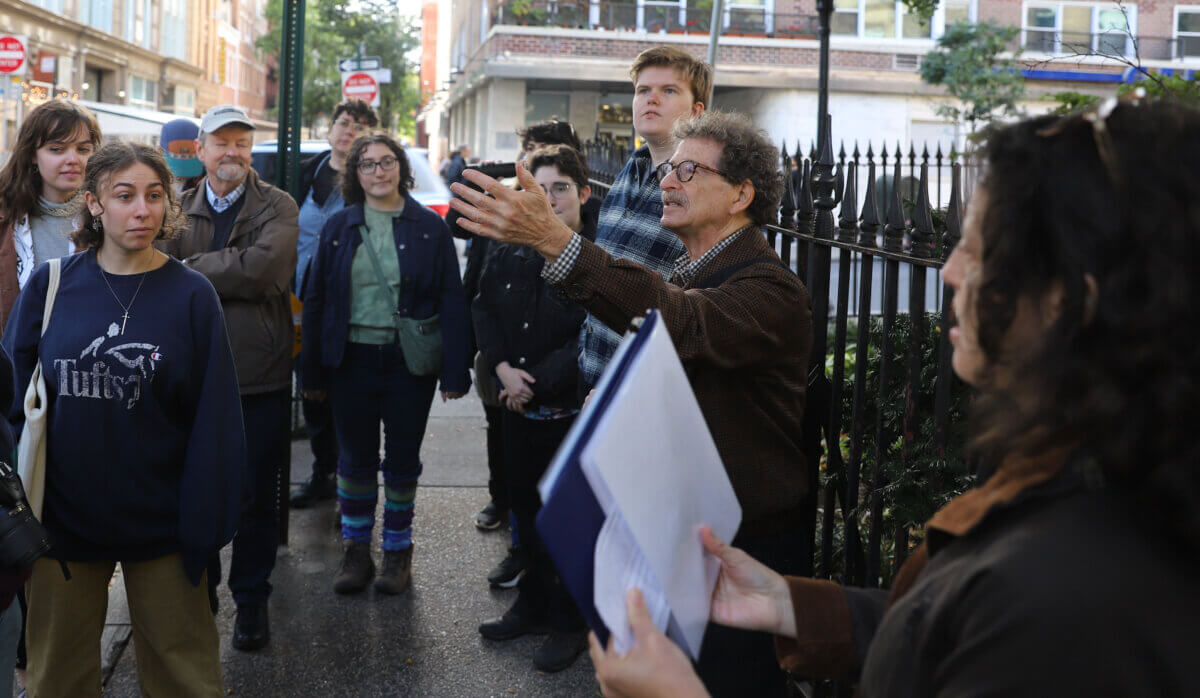
DASHIELL ALLEN
The part of Seventh Avenue South where West Fourth Street meets Christopher and Grove Streets is one of the busiest corridors in the West Village. Trendy restaurants and gay bars line the tourist-filled sidewalks and neighboring side streets, while heavy traffic rumbles by on its way to the Holland Tunnel to New Jersey. Unbeknownst to most passersby, however, the southeast corner of Grove and Seventh Avenue South — now home to the trendy pizza chain Two Boots — was, from 1972 to 1982, the Duchess, one of the city’s most popular lesbian bars at the time.
“It’s one of the most beloved sites that we’ve documented on our website from women who remember it,” said Amanda Davis, an architectural historian and project manager at the NYC LGBT Historic Sites Project, a non-profit dedicated to preserving and memorializing LGBTQ history throughout the city, with an ever-expanding interactive map of over 450 notable places.
The Duchess was popular with lesbian activists, Davis said. Among its patrons were lesbian cartoonist and writer Alison Bechdel, who recalled in 2016, “You’d step past the bouncer at the Duchess, and you were home free …. it afforded me the space to just be, with my guard down, and that was salvational.”
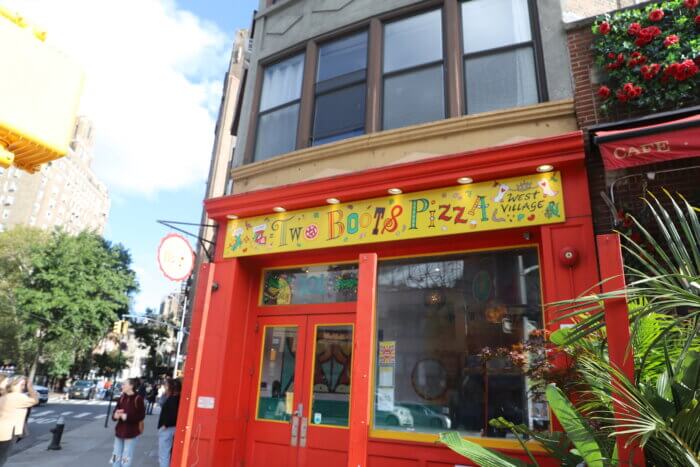
DASHIELL ALLEN
The Duchess, which had its liquor license revoked for refusing to serve men, was one of more than a dozen hidden-in-plain-site historic gems on the LGBT Historic Sites Project’s walking tour, the “Lesbian Herstory of the West Village,” on Sunday, Oct. 15. The tour took place during LGBTQ history month, which was founded in 1994 by Rodney Wilson, a gay Missouri high school teacher.
“It’s a nice time to bring people’s awareness to our project, as with Pride Month,” Davis said.
The tour started at the northwest corner of Washington Square Park, across the street from Eleanor Roosevelt’s 15th-floor residence in the 1940s. It was in that apartment that the former first lady invited many lesbian couples into her social circle and started her affair with the journalist Lorena Hickok, said Andrew Dolkart, a historian and project director with the LGBT Historic Sites Project.
From the park, the tour visited the former home of Lorraine Hansberry on Waverly Place. The playwright, most famous for her work “A Raisin In The Sun,” was a closeted lesbian, Davis said, and died at 34 of pancreatic cancer.
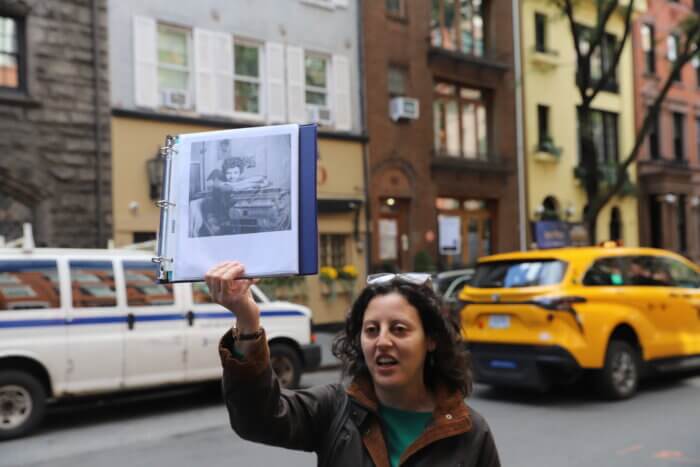
DASHIELL ALLEN
“Who’s to say if she would have been more comfortable over the years to come out,” Davis said. “But we do have letters from her,” and know she anonymously wrote “lesbian-themed short stories that appeared in popular gay and lesbian magazines of the time.”
The tour also stopped by 135 and 133 West Fourth Street, where, starting in 1972, under out gay minister Paul Ables, the former Washington Square United Methodist Church and Parish House provided a meeting place for the Salsa Soul Sisters, the “oldest Black lesbian organization in America,” according to the NYC LGBT Historic Sites Project. The organization still exists today under the name African Ancestral Lesbians United for Societal Change.
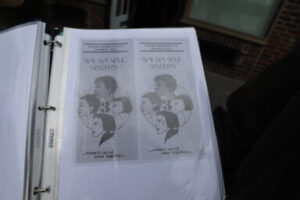
DASHIELL ALLEN
Back on the unsuspecting corner of Seventh Avenue South and Barrow Street is the former home of Labrys, New York City’s first feminist bookstore, opened by lesbian activists Marizel Rios and Jane Lurie in 1972. That’s where the phrase “The Future is Female” was coined.
“We had someone reach out to us about a year or two ago and she described Seventh Aavenue South as the lesbian super highway, because there were so many lesbian spaces,” Davis said. A few blocks down was also the Women’s Coffeehouse, from 1974 to 1978.
The LGBT Historic Sites Project has collected documents including pamphlets and flyers from many of the organizations spotlighted on the tour.
“There’s so much rich ephemeral stuff,” Dolkart said. “So think really carefully when you’re throwing things out or when you’re looking through your grandparent’s files and what they have that looks like it’s trash but is really, really valuable.” He said people can contribute documents they think might have historic value to places like the New York Public Library and New-York Historical Society.
The herstory walking tour concluded outside the now-open bar Henrietta Hudson — which describes itself as “a queer human bar built by dykes” — on Hudson Street. The space was formerly occupied, however, from 1983 to 1990, by Cubby Hole — not to be confused with the current-day Cubbyhole, another lesbian bar on West 12th Street.
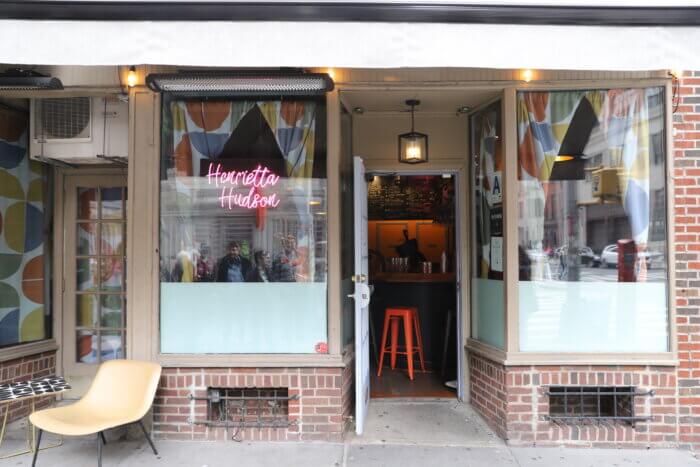
DASHIELL ALLEN
At the intersection of the past and present, the two bars are a testament to the LGBTQ community’s ever-growing New York City history. While the NYC LGBT Historic Sites Project currently researches sites that existed pre-2000, Dolkart acknowledged that may some day change.
“History becomes faster and faster,” he said. “At some point we’re going to have to rethink that I think and look at more recent sites.”
In the past year the project added over 25 sites to their map, Davis said, with many more in the pipeline, including the homes of several children’s book authors. The project is also in the process of completing an overlay of historic LGBTQ sites in the West Village to be added to the National Registry of Historic Sites.